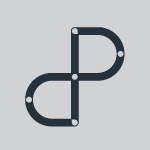The patient is center stage at this year’s PDA Europe
on LinkedIn:
The 2019 Parenteral Drug Association (PDA) Europe event was held recently in the beautiful Swedish city of Gothenburg, hosting over 950 attendees, including over 130 exhibiting companies – of which CDP was one. It’s always a great opportunity to catch up with industry colleagues, meet new ones and to hear key insights from expert speakers and poster exhibitors. Bastiaan De Leeuw, Head of Drug Delivery Business Development and Clare Beddoes, Senior Healthcare Innovation Consultant, highlight some of the key learnings from this year’s event as captured in the lecture halls, the exhibition and, of course, the famous PDA party dancefloor!
There was, as always provided so well, a wide variety of disciplines represented, including pharma, device technologists, healthcare charities, payers, regulators and patients – which is fitting, as this year the primary theme was putting the patient first.
The patient was at the center of, not only the plenary talks (including the much anticipated annual slot dedicated to hearing a patient speak), but also the human factors track, as well as many of the poster exhibits and an excellent home styled ‘Patient Pavilion’, hosted by AstraZeneca and Matchstick – providing delegates the opportunity to meet and listen to two patients and a caregiver, dealing with chronic conditions requiring regular self-injection.
There were many illuminating sessions, such as Designing for the behaviour you would like to see; focusing on the patient and the mindset of living with chronic disease and reducing the burden of treatment. Another; Patient centered design and digital health, showed us that, the burden of disease management has gradually shifted to the patient, via modifying or developing drug products intended for self-injection, as well as patient-led symptoms tracking, and (often) the need to manage co-morbidities. Those sessions concluded that drug delivery solutions, whether digital or not, should seek to personalise the experience for patients and reduce the treatment burden as much as possible. As such, Pharma is increasingly viewing drug delivery as a way to gain competitive advantage.
In addition to the 2 full days of conference content, PDA are famous for hosting a themed party at every event and this year was no exception! The 70s style disco fever party had many attendees in impressive outfits, and – as fellow children of the ‘70’s – it got us thinking about drug delivery within this context.
Technology then and now
We heard about the ‘journey’ a type 1 diabetes patient has been on whilst managing his chronic condition. He spoke of the early days of checking blood glucose monitoring sticks with colour charts on the bottle, paper diaries and calculators to work out dosing, all the way through to his experience of the ‘digitalisation’ of self-treatment of today; showing us his Freestyle Libre CGM, mobile App and the small lightweight (and discreet) insulin pump he now wears. This made us think; many of the products we see on the market today such as pre-filled syringes, autoinjectors and on-body delivery systems (pumps or bolus devices) were not even on the radar when the music we danced to at PDA was first released. What devices of the future have we not yet even thought of? What do (and will) patients really need and why?
The disco generation – the digital conundrum
Digitalisation and connectivity – with the patient experience in mind – were also huge themes. This raised the question of whether all patients need or want blinking lights and colourful screens, or if these really provide the cues, feedback and motivation needed to enable or facilitate the correct use of their device to get the full benefit from the therapy? Ask yourself why are you connecting the device? How will you provide that connectivity, does the device itself need to be connected? What data will you collect, for whom, and what action do you want based on that data? The last thing patients need is for digital technology to add to the burden of managing their chronic condition.
Answers are dependent on variables such as the disease, the drug, the patient cohort and the needs within those; but what is clear it’s not just about collecting data for data’s sake – don’t add to the patient burden. Disco was the last popular music movement driven by the baby boom generation – are those the most prevalent patients of today? Do you truly understand your patient cohorts, their differing needs and then design with those in mind? Do you understand how your devices are actually being used by patients in the home setting?
On our conference booth we presented a ‘Digital Roadmap Toolkit’, that includes our proprietary diialog™ service (a bespoke approach to find out what patients are really doing with their devices) that can help companies – at any point on their digital journey – unlock the value of digital, with reduced risk.
Budgets then and now
The phrase ‘user needs’ was mentioned by almost every speaker, but what do we mean by needs and who is the user? The patient clearly; but there are often very different needs amongst caregivers, healthcare providers (particularly in developing countries), payers and regulators. For example, the payer will commonly ask 3 key questions; what are the unmet needs (aka why is the ‘new’ treatment better than what’s available today)? What’s wrong with the current standard of care? What’s the trade-off to be made (e.g. cost, safety, utility)? Today’s patients and providers are facing ever tightening healthcare budgets and increasing moves to outcome-based reimbursement, so value must be demonstrated.
Whilst we were told it is the drug and not the device that is currently top of the charts for most payers; as more and more pharma companies focus on the device as a differentiator, studies that demonstrate that the device helps the drug to be more effective will become key. Payers require real world data and the measurement of outcomes; in fact, they can often help companies set the most appropriate end points for a trial. Therefore, some were asking – are we moving towards shared risk between pharma and payers?
That’s the way I like it
Fittingly for a conference focused on improving patient health through improved drug delivery; we danced to “Stayin’ Alive”, “Don’t stop ‘til you get enough” and “That’s the way I like it”! So how best to understand user needs from all perspectives? CDP has a tried and tested methodology (Insight for Healthcare Innovation) which starts by determining the key user groups and designs a bespoke and ‘solution agnostic’ research programme to understand their unmet needs. This is appropriate not only when designing ‘new’ devices, but also when ensuring current devices are ‘fit for purpose’ for each intended user group e.g. age distribution, indication, co-morbidities, stage of the drug lifecycle.
Here at CDP, the user and their needs are at the core of our technology and product development capability. Whether for lifecycle management, platform refinement, or next generation devices, we can help companies understand who their users are, what they need and, therefore, help drive successful innovation in new devices and treatment experiences.

Clare Beddoes
Senior Healthcare Innovation Consultant

Bastian De Leeuw
Head of Drug Delivery Business Development